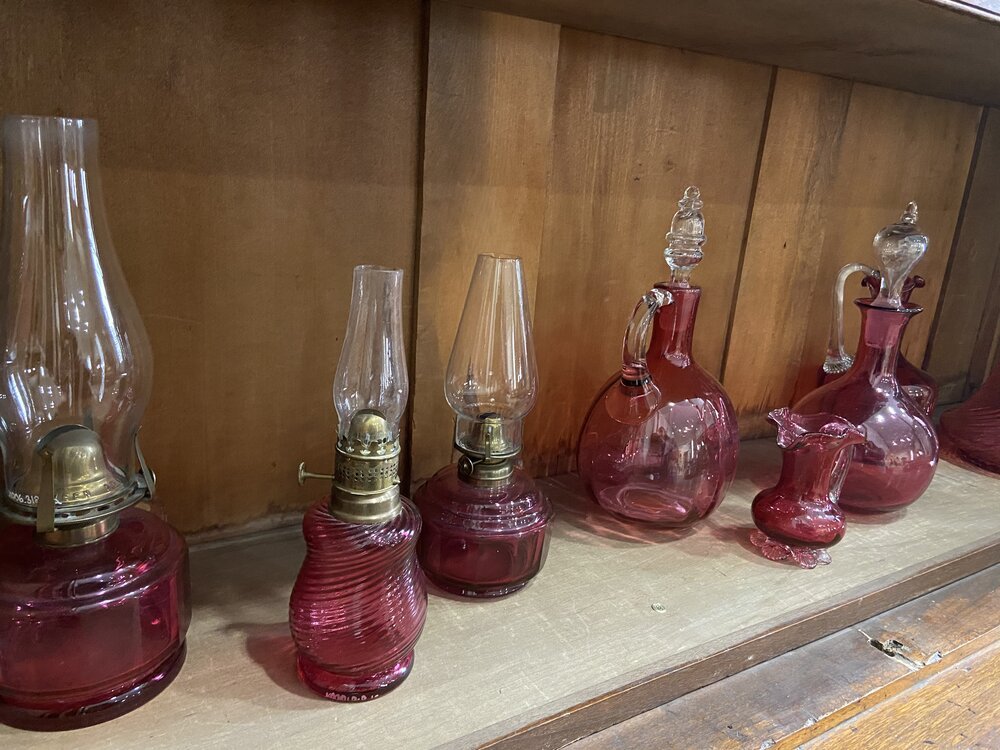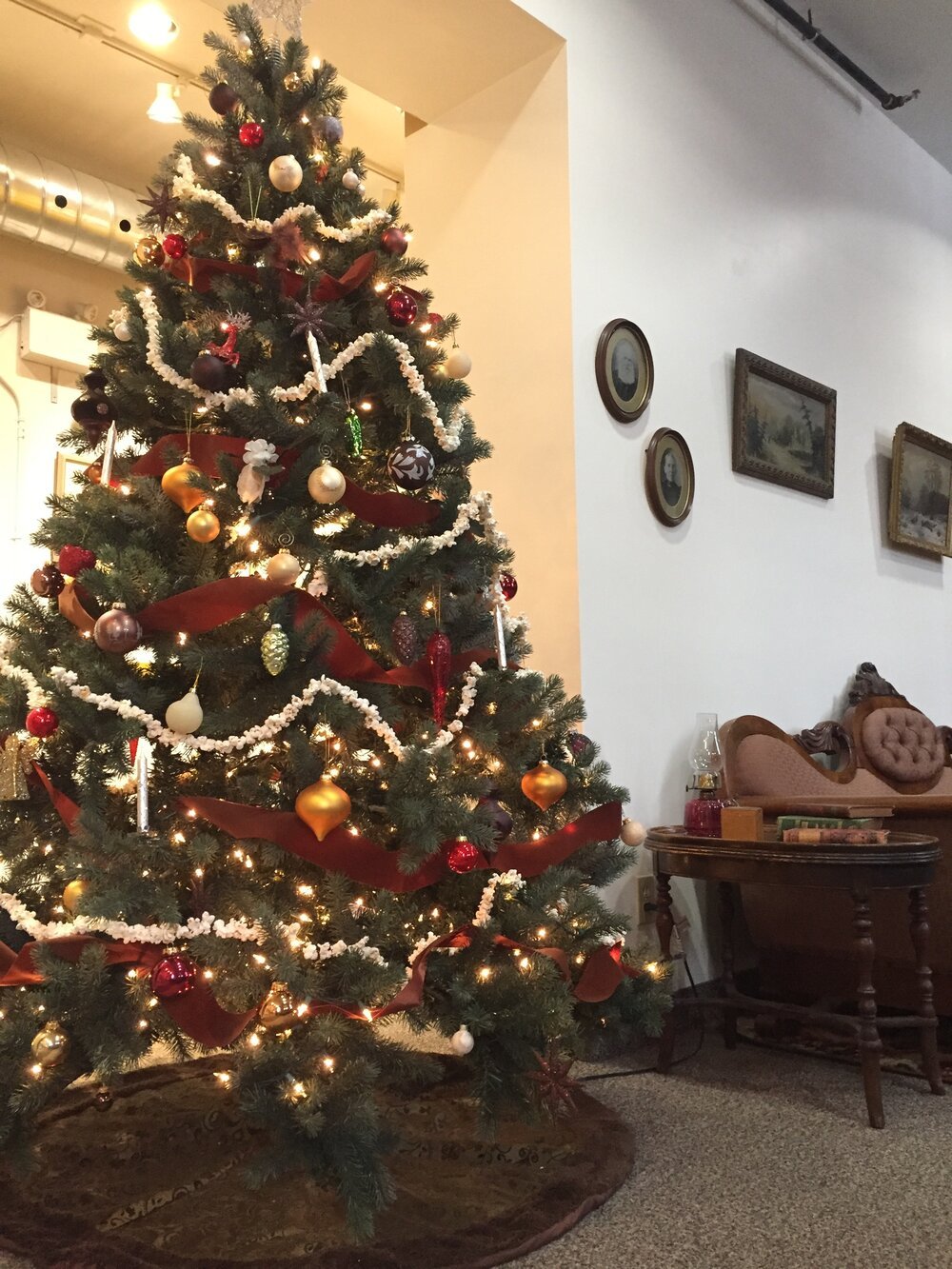Past Exhibit:
Winter Play
Past exhibit: November 2019 to March 2020
In the snowy weather outside, or toasty by the woodstove inside, you can experience the way people entertained themselves in the winter.
W.A. Goodwin with granddaughter, Elsie Ross, 1910
Winter Sports
From winter sports to board games under the Christmas tree, generations of families spent time together much as we do now. Technology has evolved but the importance of play and families spending time together has never diminished.
Much of what we show in this display would be considered sports equipment by many today, used for recreation and fitness.
When this building was first a jail in 1863, there weren’t paved roads or sidewalks or snow plows. Often the prisoners would be sent to work details to clear the streets with hand shovels. People would use snowshoes, skis, and skates to travel, dragging parcels on small sleds if they didn’t have their horse hitched to a wagon or buggy.
Essential Equipment
Snowshoes were essential gear for navigating the large amounts of snowfall. Families would often have entire sets in different sizes so that everyone would be outfitted.
Cross country skis were made from wood and may have had a layer of beeswax applied to keep the snow from sticking. People would skate on small ponds, down the Scugog River, or down the frozen gullies and ditches. Skating parties of young teenagers were a common winter activity.
Children’s Toys
Children had lots of choice for entertaining past-times including cards, board games, dolls and toys, art supplies, and visual viewing items like stereoscopes and mirrored kaleidoscopes. Books were a treasured possession and here we have 3 amazing volumes including poetry from Longfellow and Burns as well as a novel that was one of a series by Pansy Books.
The Lady’s Parlour
The parlour rug on the floor here was woven by Sarah Moore of Bryson School Road in Ops Township, using hand-dyed wool from her own sheep. We estimate about 30 shades were used in this complicated tapestry pattern, woven to double length and then stitched down the center as a common practice to get to the size needed. This project would likely have taken 6 months to a year to complete. Sarah and her husband James are shown here in these portraits above the sofa.
The lady of the house would have taken great pride in how she presented her parlour to guests. Collections of glass and china were often on display. Mrs. Peggy Woodrow (nee Laidlaw) wife of Dr. Woodrow, donated the cranberry and Mary Gregory glass, along with the cabinet and sofa, seen here.























